Term ended 24 March 1980 Predecessor Luis Chavez | Appointed 3 February 1977 Name Oscar Romero Installed 23 February 1977 Role Biographer | |
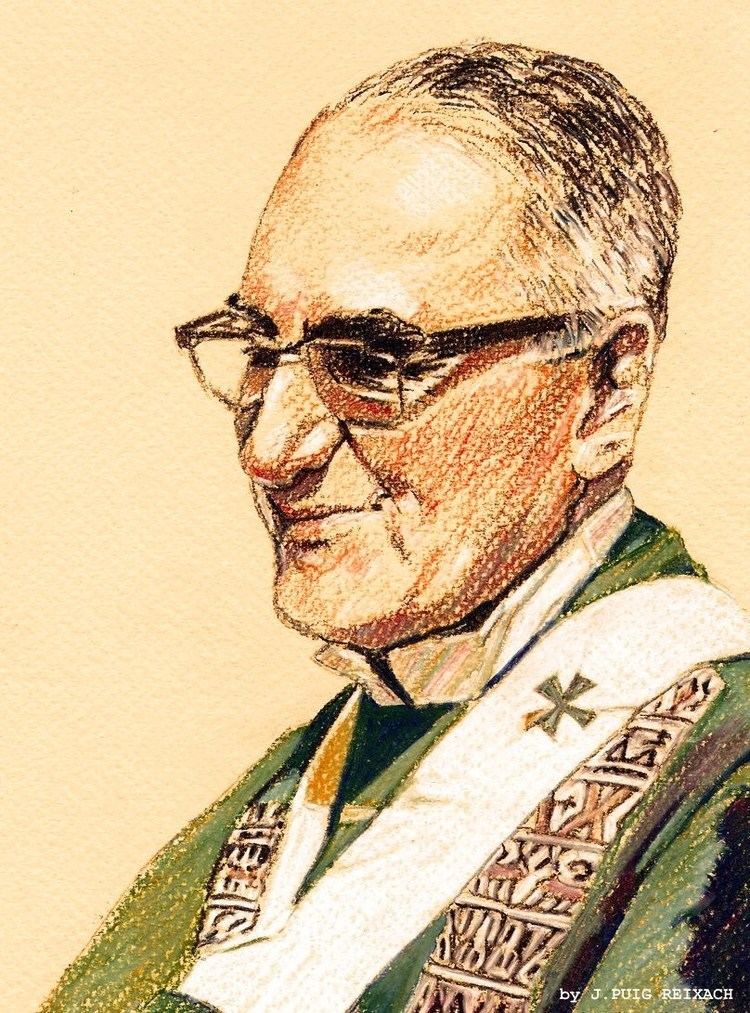 | ||
Parents Guadalupe de Jesus Galdamez, Santos Romero Siblings Arnoldo Romero y Galdamez Books Monseñor Romero, The violence of love, Archbishop Oscar Romero, Voice of the voiceless, Through The Year With Osc Similar People | ||
Oscar romero 20th century martyr
Óscar Arnulfo Romero y Galdámez (15 August 1917 – 24 March 1980) was a prelate of the Catholic Church in El Salvador, who served as the fourth Archbishop of San Salvador. He spoke out against poverty, social injustice, assassinations and torture. In 1980, Romero was assassinated while offering Mass in the chapel of the Hospital of Divine Providence.
Contents
- Oscar romero 20th century martyr
- Oscar Romero Animation
- Early life
- Priesthood
- Archbishop
- Statements on persecution of the Church
- Popular radio sermons
- Theology
- Spiritual life
- Martyrdom
- Funeral
- Massacre at Romeros funeral
- International reaction
- Ireland
- United Kingdom
- Investigations into the assassination
- International recognition
- Process for beatification
- Basis for canonization
- Beatification
- Institutions
- Television and film
- Visual arts
- Poetry and song
- Literature
- References
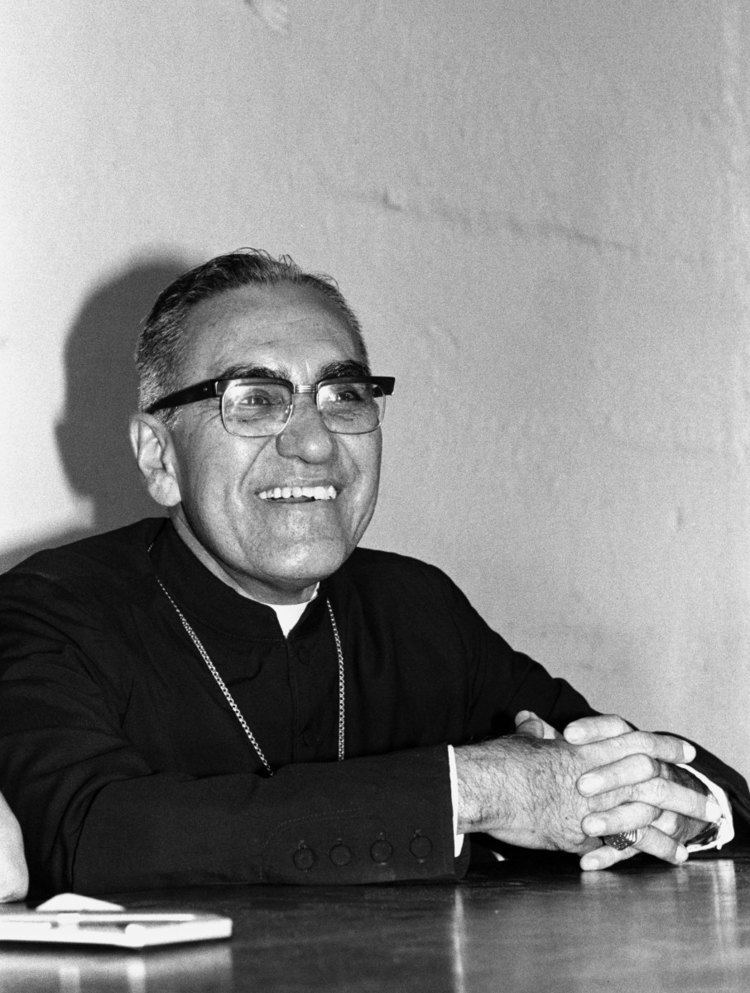
Pope Francis stated during Romero's beatification that "His ministry was distinguished by a particular attention to the most poor and marginalized." Hailed as a hero by supporters of liberation theology inspired by his work, Romero, according to his biographer, "was not interested in liberation theology", but faithfully adhered to Catholic teachings on liberation, desiring a social revolution based on supernatural interior reform. His spiritual life drew much from the spirituality of Opus Dei.
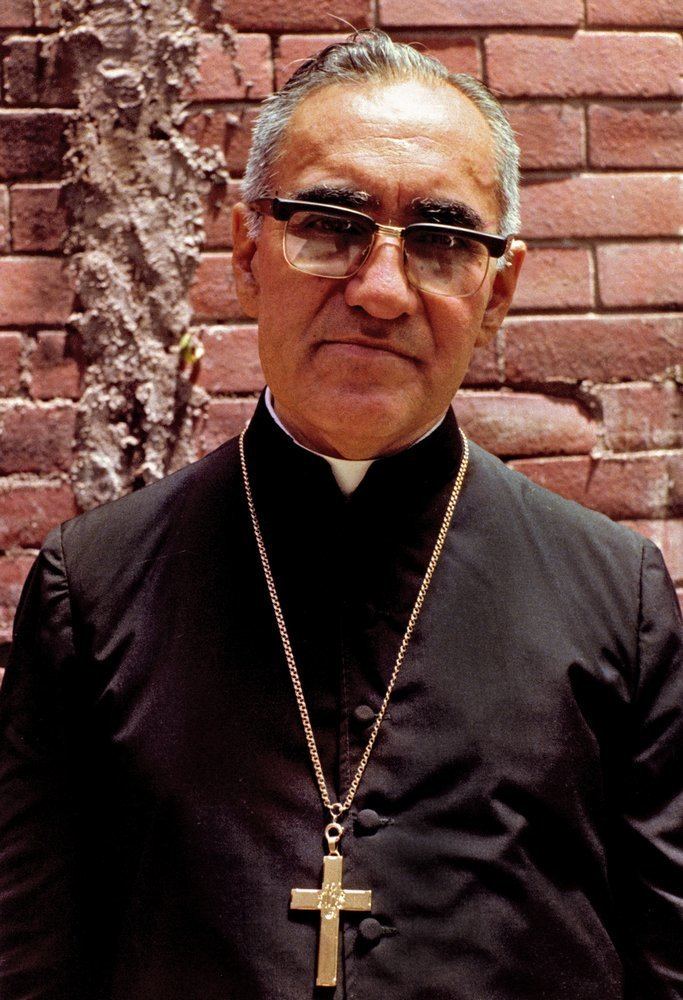
In 2010, the United Nations General Assembly proclaimed 24 March as the "International Day for the Right to the Truth Concerning Gross Human Rights Violations and for the Dignity of Victims" in recognition of the role of Archbishop Romero in defence of human rights. Romero actively denounced violations of the human rights of the most vulnerable people and defended the principles of protecting lives, promoting human dignity and opposition to all forms of violence.
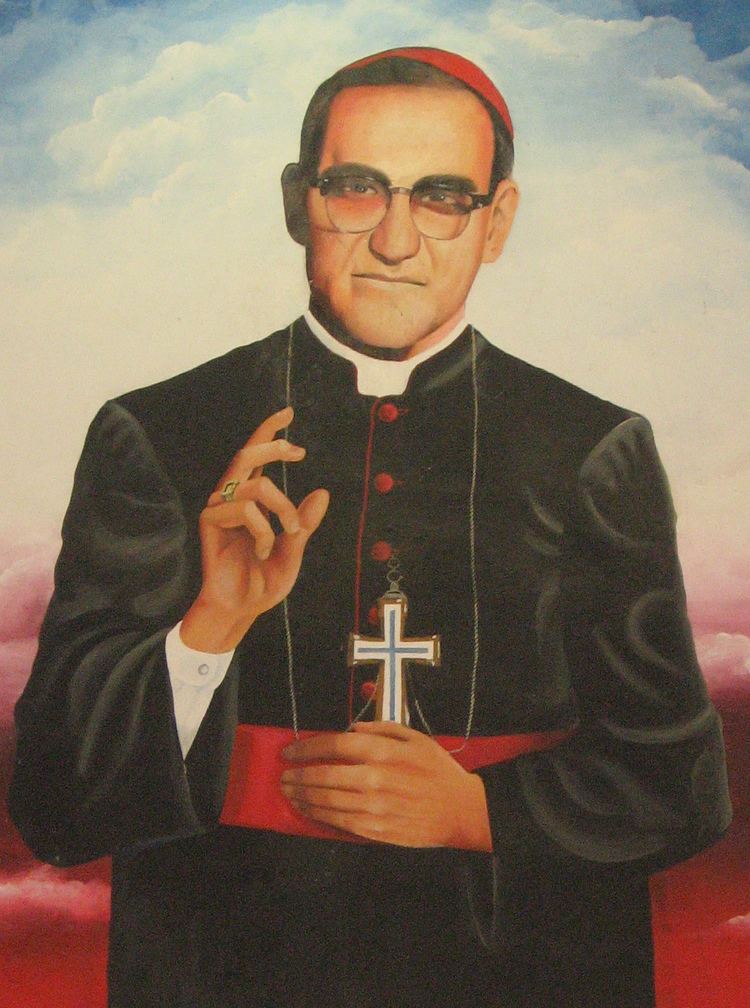
In 1997, Pope John Paul II bestowed upon Romero the title of Servant of God, and a cause for beatification and canonization was opened for him. The cause stalled, but was reopened by Pope Benedict XVI in 2012. He was declared a martyr by Pope Francis on 3 February 2015, paving the way for his beatification, which took place on 23 May 2015.
Latin American church groups often proclaim Romero an unofficial patron saint of the Americas and/or El Salvador; Catholics in El Salvador often refer to him as "San Romero". Even outside of Catholicism, Romero is honored by other Christian denominations, including Church of England and Anglican Communion through the Calendar in Common Worship, as well as in at least one Lutheran liturgical calendar. Archbishop Romero is also one of the ten 20th-century martyrs depicted in statues above the Great West Door of Westminster Abbey in London. In 2008, Europe-based magazine A Different View included Romero among its 15 Champions of World Democracy.
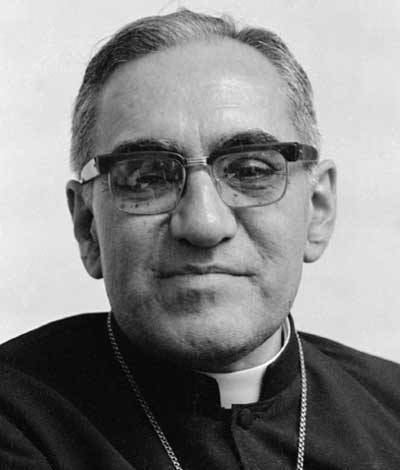
Oscar Romero Animation
Early life
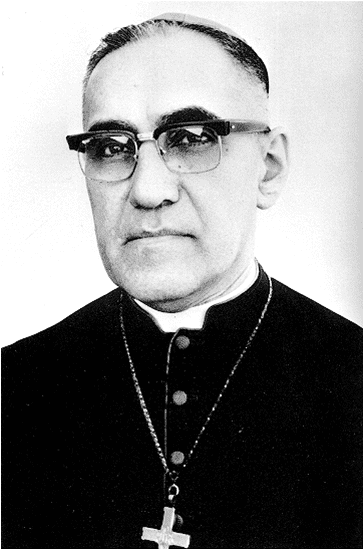
Romero was born 15 August 1917, to Santos Romero and Guadalupe de Jésus Galdámez in Ciudad Barrios in the San Miguel department of El Salvador. On 11 May 1919, at the age of one, Óscar was baptised into the Catholic Church by Fr. Cecilio Morales. He had 5 brothers and 2 sisters: Gustavo, Zaída, Rómulo, Mamerto, Arnoldo and Gaspar, and Aminta (who died shortly after birth).
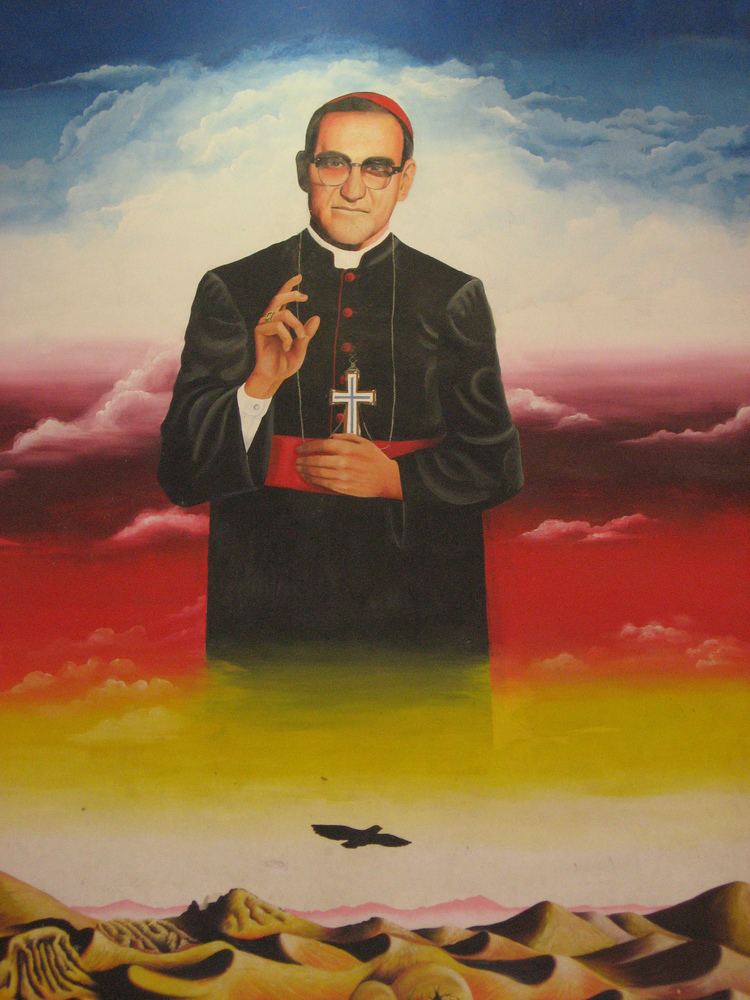
Romero entered the local public school, which offered only grades one through three. When finished with public school, Romero was privately tutored by a teacher, Anita Iglesias, until the age of thirteen. During this time Óscar's father, Santos, trained Romero in carpentry. Romero showed exceptional proficiency as an apprentice. Santos wanted to offer his son the skill of a trade, because in El Salvador studies seldom led to employment. However, the boy broached the idea of studying for the priesthood, which did not surprise those who knew him.
Priesthood
Romero entered the minor seminary in San Miguel at the age of thirteen. He left seminary for three months to return home when his mother became ill after the birth of her eighth child; during this time he worked with two of his brothers in a gold mine near Ciudad Barrios. After graduation he enrolled in the national seminary in San Salvador. He completed his studies at the Gregorian University in Rome, where he received a Licentiate in Theology cum laude in 1941, but had to wait a year to be ordained because he was younger than the required age. He was ordained in Rome on 4 April 1942. His family could not attend his ordination because of travel restrictions due to World War II. Romero remained in Italy to obtain a doctoral degree in Theology and specialized in ascetical theology and Christian perfection according to Venerable Luis de la Puente. Before finishing, in 1943 at the age of 26, he was summoned back home from Italy by his bishop. He traveled home with a good friend, Father Valladares, who was also doing doctoral work in Rome. On the route home, they made stops in Spain and Cuba, where they were detained by the Cuban police, perhaps for having come from Fascist Italy, and were placed in a series of internment camps. After several months in prison, Valladares became sick and priests of the Congregation of the Most Holy Redeemer helped to have the two transferred to a hospital. From the hospital, they were released from Cuban custody and sailed on to Mexico, then traveled overland to El Salvador.
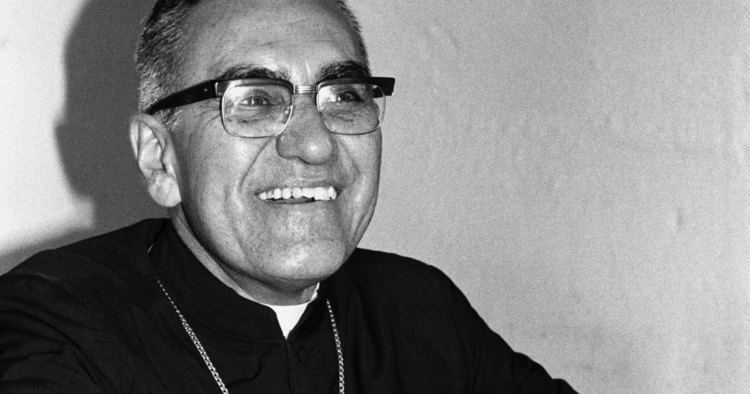
Romero was first assigned to serve as a parish priest in Anamorós, but then moved to San Miguel where he worked for over 20 years. He promoted various apostolic groups, started an Alcoholics Anonymous group, helped in the construction of San Miguel's cathedral and supported devotion to Our Lady of Peace. He was later appointed rector of the inter-diocese seminary in San Salvador. In 1966, he was chosen to be Secretary of the Bishops Conference for El Salvador. He also became the director of the archdiocesan newspaper Orientación, which became fairly conservative while he was editor, defending the traditional Magisterium of the Catholic Church.
In 1970, Romero was appointed an auxiliary bishop for the Archdiocese of San Salvador. In 1974, he was appointed Bishop of the Diocese of Santiago de María, a poor, rural region.
Archbishop
On 23 February 1977, Romero was appointed Archbishop of San Salvador. While this appointment was welcomed by the government, many priests were disappointed, especially those openly aligning with Marxism. The progressive priests feared that his conservative reputation would negatively affect liberation theology's commitment to the poor.
On 12 March 1977, Rutilio Grande, a Jesuit priest and personal friend of Romero who had been creating self-reliance groups among the poor, was assassinated. His death had a profound impact on Romero, who later stated, "When I looked at Rutilio lying there dead I thought, 'If they have killed him for doing what he did, then I too have to walk the same path'". Romero urged the government to investigate, but they ignored his request. Furthermore, the censored press remained silent.
Tension was noted by the closure of schools and the lack of Catholic priests invited to participate in government. In response to Grande's murder, Romero revealed an activism that had not been evident earlier, speaking out against poverty, social injustice, assassinations and torture.
In 1979, the Revolutionary Government Junta came to power amidst a wave of human rights abuses by paramilitary right-wing groups and the government in an escalation of violence that would become the Salvadoran Civil War. Romero criticized the United States for giving military aid to the new government and wrote to President Jimmy Carter in February 1980, warning that increased US military aid would "undoubtedly sharpen the injustice and the political repression inflicted on the organized people, whose struggle has often been for their most basic human rights." Carter ignored Romero's pleas and continued military aid to the Salvadoran government.
As a result of his humanitarian efforts, Romero began to be noticed internationally. In February 1980, he was given an honorary doctorate by the University of Louvain. On his visit to Europe to receive this honor, he met Pope John Paul II and expressed his concerns at what was happening in his country. Romero argued that it was problematic to support the Salvadoran government because it legitimized terror and assassinations.
Statements on persecution of the Church
Romero denounced the persecution of members of the Catholic Church who had worked on behalf of the poor:
In less than three years, more than fifty priests have been attacked, threatened, calumniated. Six are already martyrs--they were murdered. Some have been tortured and others expelled [from the country]. Nuns have also been persecuted. The archdiocesan radio station and educational institutions that are Catholic or of a Christian inspiration have been attacked, threatened, intimidated, even bombed. Several parish communities have been raided. If all this has happened to persons who are the most evident representatives of the Church, you can guess what has happened to ordinary Christians, to the campesinos, catechists, lay ministers, and to the ecclesial base communities. There have been threats, arrests, tortures, murders, numbering in the hundreds and thousands....
But it is important to note why [the Church] has been persecuted. Not any and every priest has been persecuted, not any and every institution has been attacked. That part of the church has been attacked and persecuted that put itself on the side of the people and went to the people's defense. Here again we find the same key to understanding the persecution of the church: the poor.
Popular radio sermons
By the time of his death, Romero had built up an enormous following among Salvadorans. He did this largely through broadcasting his weekly sermons across El Salvador on the Church's station, YSAX, "except when it was bombed off the air." In these sermons, he listed disappearances, tortures, murders and much more each Sunday. This was followed by an hour-long speech on radio the following day. On the importance of these broadcasts, one writer noted "The archbishop's Sunday sermon was the main source in El Salvador about what was happening. It was estimated to have the largest listenership of any programme in the country". According to listener surveys, 73% of the rural population and 37% of the urban listened regularly. Similarly, his diocesan weekly paper Orientación carried lists of cases of torture and repression every week.
Theology
According to Jesús Delgado, his biographer and Postulator of the Cause for his canonization, Romero agreed with the Catholic vision of Liberation Theology and not with the Marxist vision: "A journalist once asked him: ‘Do you agree with Liberation Theology’ And Romero answered: "Yes, of course. However, there are two theologies of liberation. One is that which sees liberation only as material liberation. The other is that of Paul VI. I am with Paul VI." Delgado said that Romero did not read the books on Liberation Theology which he received, and he gave the lowest priority to Liberation Theology among the topics that he studied.
Romero preached that "The most profound social revolution is the serious, supernatural, interior reform of a Christian." He also emphasized: "The liberation of Christ and of His Church is not reduced to the dimension of a purely temporal project. It does not reduce its objectives to an anthropocentric perspective: to a material well-being or to initiatives of a political or social, economic or cultural order, only. Much less can it be a liberation that supports or is supported by violence." Romero expressed several times his disapproval for the Marxist inspired Liberation Theology. On a sermon preached on 11 November 1979, he said: "The other day, one of the persons who proclaims liberation in a political sense was asked: ‘For you, what is the meaning of the Church’?" He said that the activist "answered with these scandalous words: ‘There are two churches, the church of the rich and the church of the poor. We believe in the church of the poor but not in the church of the rich’." Romero declared, "Clearly these words are a form of demagogy and I will never admit a division of the Church." He added, "There is only one Church, the Church that Christ preached, the Church to which we should give our whole hearts" and "There is only one Church, a Church that adores the living God and knows how to give relative value to the goods of this earth."
Spiritual life
Romero noted in his diary on 4 February 1943: "In recent days the Lord has inspired in me a great desire for holiness. I have been thinking of how far a soul can ascend if it lets itself be possessed entirely by God." Commenting on this passage, James R. Brockman, S.J., Romero's biographer and author of Romero: A Life, said that "All the evidence available indicates that he continued on his quest for holiness until the end of his life. But he also matured in that quest."
According to Brockman, Romero's spiritual journey had some of these characteristics:
Romero was a strong advocate of the spiritual charism of Opus Dei. He received weekly spiritual direction from a priest of the Opus Dei movement. In 1975 he wrote in support of the cause of canonization of Opus Dei's founder, "Personally, I owe deep gratitude to the priests involved with the Work, to whom I have entrusted with much satisfaction the spiritual direction of my own life and that of other priests."
Martyrdom
On 23 March 1980, Romero delivered a sermon in which he had called on Salvadoran soldiers, as Christians, to obey God's higher order and to stop carrying out the government's repression and violations of basic human rights.
Romero spent 24 March in a recollection organized by Opus Dei, a monthly gathering of priest friends led by Msgr. Fernando Sáenz Lacalle. On that day they reflected on the priesthood. That evening, Romero celebrated Mass at a small chapel at Hospital de la Divina Providencia (Divine Providence Hospital). (a a church-run hospital specializing in oncology and care for the terminally ill). Romero finished his sermon, stepped away the lectern, and took a few steps to stand at the center of the altar.
As Romero finished speaking, a red automobile came to a stop on the street in front of the chapel. The gunman emerged from the vehicle, stepped to the door of the chapel, and fired one (possibly two) shots at Romero, probably using a silencer. Romero was struck in the heart, and the vehicle sped off.
Funeral
Romero was buried in the Metropolitan Cathedral of San Salvador (Catedral Metropolitana de San Salvador). The Funeral Mass on 30 March 1980 in San Salvador was attended by more than 250,000 mourners from all over the world. Viewing this attendance as a protest, Jesuit priest John Dear has said, "Romero's funeral was the largest demonstration in Salvadoran history, some say in the history of Latin America."
At the funeral, Cardinal Ernesto Corripio y Ahumada, speaking as the personal delegate of Pope John Paul II, eulogized Romero as a "beloved, peacemaking man of God", and stated that "his blood will give fruit to brotherhood, love and peace."
Massacre at Romero's funeral
During the ceremony, smoke bombs exploded on the streets near the cathedral and subsequently there were rifle shots that came from surrounding buildings, including the National Palace. Many people were killed by gunfire and in the stampede of people running away from the explosions and gunfire; official sources reported 31 overall casualties, while journalists recorded that between 30 and 50 died. Some witnesses claimed it was government security forces that threw bombs into the crowd, and army sharpshooters, dressed as civilians, that fired into the chaos from the balcony or roof of the National Palace. However, there are contradictory accounts as to the course of the events and "probably, one will never know the truth about the interrupted funeral."
As the gunfire continued, Romero's body was buried in a crypt beneath the sanctuary. Even after the burial, people continued to line up to pay homage to their martyred prelate.
International reaction
Romero's assassination received considerable attention globally.
Ireland
All sections of Irish political and religious life condemned his assassination, with the Irish Minister for Foreign Affairs Brian Lenihan 'expressing shock and revulsion at the murder of Dr Romero', while the leader of the Trócaire charity, Eamon Casey, revealing that he had received a letter from Romero that very day. The previous October parliamentarians had given their support to the nomination that Archbishop Romero receive the Nobel Prize for Peace. In March each year since the 1980s, the Irish-El Salvador Support Committee holds a mass in honour of Archbishop Romero.
United Kingdom
In October 1978, 119 British parliamentarians nominated Romero for the Nobel Prize for Peace. In this they were supported by 26 members of the United States Congress. When news of his assassination was reported, the new head of the Church of England, Robert Runcie, was about to be enthroned in Canterbury Cathedral. On hearing of Romero's death, one writer observed that Runcie "departed from the ancient traditions to decry the murder of Archbishop Oscar Romero in El Salvador".
Investigations into the assassination
To date, no one has ever been prosecuted for the assassination, or confessed to it. The assassin has not been identified.
It is widely believed that the four assassins were members of a death squad led by former Major Roberto D'Aubuisson. This view was supported by ex-US ambassador Robert White, who in 1984 reported to the United States Congress that "there was sufficient evidence" to convict D'Aubuisson of planning and ordering Archbishop Romero's assassination. It was also supported in 1993 by an official United Nations report which identified D'Aubuisson as the man who ordered the killing. It is believed that D'aubisson had strong connections to the Nicaraguan National Guard and to its offshoot the Fifteenth of September Legion and had also planned to overthrow the government in a coup. Later he founded the political party Nationalist Republican Alliance (ARENA), and organized death squads that systematically carried out politically motivated assassinations and other human rights abuses in El Salvador. Álvaro Rafael Saravia, a former captain in the Salvadoran Air Force, was chief of security for D'Aubuisson and an active member of these death squads. In 2003, a United States human rights organization, the Center for Justice and Accountability, filed a civil action against Saravia. In 2004, he was found liable by a US District Court under the Alien Tort Claims Act (ATCA) (28 U.S.C. § 1350) for aiding, conspiring, and participating in the assassination of Romero. Saravia was ordered to pay $10 million for extrajudicial killing and crimes against humanity pursuant to the ATCA; he has since gone into hiding. On 24 March 2010—the thirtieth anniversary of Romero's death—Salvadoran president Mauricio Funes offered an official state apology for Romero's assassination. Speaking before Romero's family, representatives of the Catholic Church, diplomats, and government officials, Funes said those involved in the assassination "…unfortunately acted with the protection, collaboration or participation of state agents."
A 2000 article by then-UK's Guardian, later BBC, correspondent Tom Gibb attributes the murder to a detective of the Salvadoran National Police named Oscar Perez Linares, on orders of D'Aubuisson. The article cites an anonymous former death squad member who claimed he had been assigned to guard a house in San Salvador used by a unit of 3 counter-guerrilla operatives directed by D'Aubuisson. The guard, who Gibb identified as "Jorge," purported to have witnessed Linares fraternizing with the group, which was nicknamed the "Little Angels," and to have heard them praise Linares for the killing. The article furthermore attributes full knowledge of the assassination to the CIA as far back as 1983.The article reports that both Linares and the Little Angels commander, who Jorge identified as "El Negro Mario," were killed by a CIA-trained Salvadoran special police unit in 1986; the unit had been assigned to investigate the murders. In 1983, Lt. Col. Oliver North, aide to then-Vice President George H.W. Bush, is alleged to have personally requested the Salvadoran military to "remove" Linares and several others from their service. 3 years later, they were pursued and extrajudicially killed - Linares after being found in neighboring Guatemala. The article cites another source in the Salvadoran military as saying, "they knew far too much to live."
In a 2010 article for the El Salvador online newspaper article El Faro, Saravia, who was interviewed from a mountain hideout, named D'Aubuisson as giving the assassination order to him over the phone. Saravia said that he and his cohorts drove the assassin to the chapel and paid him 1,000 Salvadoran colons after the event.
International recognition
During his first visit to El Salvador in 1983, Pope John Paul II entered the cathedral in San Salvador and prayed at Romero's tomb, despite opposition from the government and from within the Church. Afterwards, the Pope praised Romero as a "zealous and venerated pastor who tried to stop violence." John Paul II also asked for dialogue between the government and opposition to end El Salvador's civil war.
On 7 May 2000, in Rome's Colosseum during the Jubilee Year celebrations, Pope John Paul II commemorated twentieth-century martyrs. Of the several categories of martyrs, the seventh consisted of Christians who were killed for defending their brethren in the Americas. Despite the opposition of some within the Church, John Paul II insisted that Archbishop Romero be included. He asked the organizers of the event to proclaim Romero "that great witness of the Gospel."
On 21 December 2010, the United Nations General Assembly proclaimed 24 March as the International Day for the Right to the Truth concerning Gross Human Rights Violations and for the Dignity of Victims which recognizes, in particular, the important work and values of Archbishop Óscar Arnulfo Romero.
On 22 March 2011, U.S. President Barack Obama visited Romero's tomb during an official visit to El Salvador.
President of Ireland Michael D. Higgins visited the Cathedral and tomb of Archbishop Romero on 25 October 2013 during a state visit to El Salvador. Famed linguist Noam Chomsky speaks highly and often about Romero's social work and murder
Process for beatification
In 1990, on the tenth anniversary of the assassination, the sitting Archbishop of San Salvador, Arturo Rivera y Damas, appointed a postulator to prepare documentation for a cause of beatification and eventual canonization of Romero. The documents were formally accepted by Pope John Paul II and the Congregation for the Causes of Saints in 1997, and Romero was given the title of Servant of God.
In March 2005, Vincenzo Paglia, the Vatican official in charge of the process, announced that Romero's cause had cleared a theological audit by the Congregation for the Doctrine of the Faith, at the time headed by Cardinal Joseph Ratzinger (later elected Pope Benedict XVI) and that beatification could follow within six months. Pope John Paul II died within weeks of those remarks. Predictably, the transition of the new pontiff slowed down the work of canonizations and beatifications. Pope Benedict instituted changes that had the overall effect of reining in the Vatican's so-called "factory of saints." Later that year, an October 2005 interview by Cardinal Jose Saraiva Martins, the Prefect of the Congregation for the Causes of Saints, was asked if Paglia's predictions checked out. Cardinal Saraiva responded, "Not as far as I know today." In November 2005, a Jesuit magazine signaled that Romero's beatification was still "years away."
Paglia said that in December 2012 Pope Benedict XVI had informed him that he had decided to "unblock" the cause and allow it to move forward.
In 2013, Archbishop Gerhard Ludwig Müller, Prefect of the Congregation for the Doctrine of the Faith, stated that the Vatican doctrinal office has been "given the greenlight" to pursue sainthood for Romero.
In 2014, Gregorio Rosa Chavez, Auxiliary Bishop of the Archdiocese of San Salvador, said that the beatification process was in its final stages.
Basis for canonization
The Congregation for Saints' Causes voted unanimously to recommend Pope Francis recognize Romero as a martyr. "He was killed at the altar. Through him, they wanted to strike the church that flowed from the Second Vatican Council." His assassination "was not caused by motives that were simply political, but by hatred for a faith that, imbued with charity, would not be silent in the face of the injustices that relentlessly and cruelly slaughtered the poor and their defenders."
On Monday, 19 May 2014, an online news story article appearing on the Catholic News Service (CNS) website homepage stated that the incumbent Archbishop of San Salvador, José Luis Escobar Alas, and three other Salvadoran Catholic bishops, meeting with Pope Francis, urged him to come to San Salvador to personally beatify Archbishop Romero if and when he is beatified. To be beatified, a posthumous, usually an unexplainable medical, miracle (verified by the prelate members of the Congregation for the Causes of Saints after an archdiocesan and Vatican-based medical and theological investigation, and signed by the Pope) would need to be attributed to an intercession to him, or alternatively, he could be declared a martyr or the Pope could, extremely rarely, use his right to waive both of these requirements for beatification, which somewhat like canonization, is meant to be a definitive statement about his sanctity. The controversy was whether his assassination was solely out of hatred for the faith (the requirement for martyrdom), or was influenced by politics, liberation theology, or by his vocal criticisms of the regime at the time during the civil war.
Beatification
On 18 August 2014, Pope Francis said that "The process [of beatification of Romero] was at the Congregation for the Doctrine of the Faith, blocked for 'prudential reasons', so they said. Now it is unblocked." Pope Francis stated that "There are no doctrinal problems and it is very important that [the beatification] is done quickly". The beatification is widely seen as the pope's strong affirmation of Romero's work with the poor and as a major change in the direction of the church since he was elected.
On Friday, 9 January 2015, an online news story article by Carol Glatz of Catholic News Service (CNS) stated that on Thursday, 8 January 2015: "A panel of theologians advising the Vatican's Congregation for the Causes of Saints voted unanimously to recognize the late Salvadoran Archbishop Oscar Romero as a martyr, according to the newspaper of the Italian bishops' conference." It is a key step in his canonization process. Next, the Cardinals who are voting members of the Congregation for the Causes of Saints in the Roman Curia must vote to recommend to Pope Francis that Archbishop Romero be beatified. A miracle is not required for beatification candidates who the Pope decrees are martyrs to be beatified, as it would normally be otherwise. If he is beatified as a martyr, a miracle will then normally be needed for him to be canonized.
On Tuesday, 3 February 2015, Pope Francis received Cardinal Angelo Amato, S.D.B., Prefect of the Congregation for the Causes of Saints, in a private audience, and authorized the Cardinal to promulgate (officially authorize) Archbishop Romero's decree of martyrdom, meaning it has gained the Congregation's voting members and the Pope's approval. This clears the way for the Pope to later set a date for his beatification.
In an online news story article by Carol Glatz of Catholic News Service (CNS), it was stated that the newspaper of the Italian Catholic Bishops Conference had said that Romero would be beatified in San Salvador on Saturday, May 23, 2015. Italian Archbishop Vincenzo Paglia, the Postulator (chief promoter) of the cause for canonization, was expected to make the formal announcement later in the day, Wednesday, 11 March 2015.
The beatification of Romero was held in San Salvador on 23 May 2015. It was celebrated in the Plaza Salvador del Mundo under the Monumento al Divino Salvador del Mundo. Cardinal Angelo Amato, S.D.B., presided over the ceremony on behalf of Pope Francis, who sent a letter to Archbishop of San Salvador José Luis Escobar Alas, marking the occasion and calling Romero "a voice that continues to resonate". An estimated 250,000 people attended the service, many watching on large television screens set up in the streets around the plaza.
Institutions
Television and film
Visual arts
Poetry and song
Literature
In their work Manufacturing Consent, Noam Chomsky and Edward S. Herman used the murders of Romero and other Latin American clergy, and their subsequent media coverage in the United States, as a case study of the propaganda model, where it is compared and contrasted with the coverage of the murder of Catholic priest Jerzy Popiełuszko in Communist Poland. Chomsky and Herman argued that being murdered by an enemy state, Popiełuszko would be seen as an "worthy victim" and thus receive extensive press coverage, while Romero and other Latin American clergy, being murdered by US client states, would be deemed as "unworthy victims", and thus would not receive as much press coverage.
